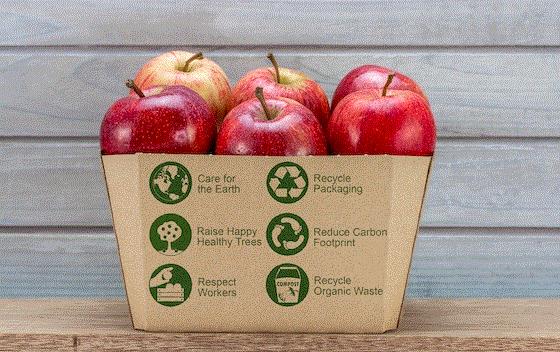Organic Fertilizer & Ralstonia
A new study out in Microbiome Journal shows that over six generations of planting, tomatoes treated with organic fertilizer showed a significantly lower disease index than those treated with a conventional fertilizer. It seems that organic fertilizer can help tomato plants activate a defense mechanism that involves microRNAs and allows them to fight off bacterial wilt while promoting the growth of beneficial microbes. (In this study, they started by testing chicken manure in a field setting, and then tested various fertilizer formulations in subsequent potted experiments.)
The study found that plants treated with organic fertilizer had roots that secreted crucial miRNAs that inhibited the proliferation of Ralstonia solanacearum. Researchers say that nonmicrobial components of the fertilizer helped with that secretion, while microbial components of the fertilizer provided beneficial microbial communities that also teamed up to inhibit the ralstonia.

Marketing Your Story: Documentary Style
Whole Foods has been pushing out the stories of farmers and suppliers lately. Take a look at their
YouTube channel—it's full of videos that aim to tell the stories of where food comes from and the philosophies of farmers on the ground, including a big emphasis on regenerative agriculture. When you’re Whole Foods, you probably have a bigger budget than most to invest in this kind of storytelling, but still, I think this new series they’re created called “The Whole Story” is a great study in communicating the passion behind each product.
Today’s communications often try to boil everything down to the 7-second attention span, which means most of the marketing we see lacks depth, details and a real story. These documentary-style videos expand the view just enough for the viewer to learn something new and see food production through the lens of the person making decisions on the ground.
While you might not have the budget for a big production team, I bet you’ve got leaders with big thoughts and teams that care about how you grow—not just the end product. Or maybe you have a retail customer who would love to feature your company in this way?
Here are a few to check out:

Sustainable Packaging and Gen Z

Over at Buzz!, my colleague Ellen Wells offered this commentary on sustainable packaging this week. Take a read to see why:
One of my new favorite food industry newsletters, Food Navigator, finds that Gen Z still wants sustainable packaging. This bucks a (disappointing) trend of declining interest in sustainability.
Food Navigator says that Grand View Research predicts a compound annual growth rate in the sustainable packaging market of 7.6% between 2025 and 2030, putting the industry at $354 billion by 2030. And, according to consultancy McKinsey, the demand is driven by Gen Z. McKinsey found that 25% of the European high-income Gen Zs surveyed were willing to pay “a lot more” for sustainable packaging, compared to 1% of high-income Gen Xers.
Sustainability isn’t the top priority in terms of food packaging, however.
According to the survey, food safety and shelf-life are by far more important. The study points out that sustainability as a concern has not declined but has remained steady, but other factors such as price are gaining more attention.
What do I always say? Where food goes, garden retail is not far behind. As you are walking around trade show floors this summer, keep this sustainable packaging nugget of information rolling around in your brain.

New Guides on Cold Chain & H-2A & H-2B
Sustainabloom just added two new guides to their list of resources for floriculture professionals.
First up is the new
Cold Chain Management Guide, which covers proper temperatures for cut flowers. Learn how to implement proper cold chain management that can maximize your profits and minimize your effect on the environment. The guide offers practical tips about where to start with cold chain management, including information about temperature control, pre-cooling, sanitation, employee training and preservation methods. View the full guide
HERE.
Next up is the ever-important topic of human resources. Sustainabloom’s
H-2A and H-2B Work Visa Guide delves into the benefits and processes of the temporary work visa programs. The guide highlights several ways the programs can be used as a labor solution for floriculture businesses while also supporting a more globally inclusive industry. View the full guide
HERE.
If you haven’t checked out
Sustainabloom before, they now have 18 floriculture guides available on all kinds of sustainability topics, ranging from energy efficiency to integrated pest management and plastics.

Report from the MT Outpost
I’m convinced that the wild critters are trying to run us off this summer. A marmot got into the truck and chewed a bunch of (costly) wires, which is one of a long list of recent marmot troubles. The voles have carried off two basil plants and three cabbages this week. The only evidence left being a single wilted cabbage leaf halfway down a vole hole. And while I’ve done what I think is a pretty good job of narrowing down my perennials to those that the deer won’t touch (at least until late fall), I have one stubborn mule deer doe who has decided my plants—blooms in particular—are the only thing she wants to eat.
You have to temper your disappointment/anger with the knowledge that this is how nature works a lot of the time. I’d been contemplating raised beds in the vegetable garden for a while, and this might be my sign to prioritize that project (with some mesh wire to keep voles out).
Until next time,

Jennifer Duffield White
jwhite@ballpublishing.com
This email received by 27,008 loyal readers!
Want to be one of the lucky sponsors who reach those readers of GreenTalks? Drop Paul Black a line and he’ll tell you what a bargain it is!
GreenTalks® is a registered trademark of Ball Horticultural Company in the U.S.